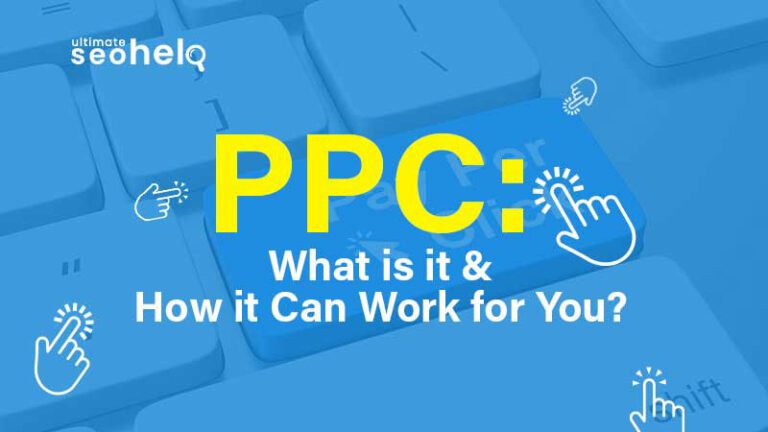Even though we are sure that most people who are reading this blog are already aware of what PPC is, for those who don’t, we’ll go into explaining it in brief.
PPC advertising, is a type of marketing in which you establish a spending limit for running advertisements on a website like Facebook or Google’s search engine (social media platform). Every time the ad is clicked, the advertiser receives payment.
Although PPC is a broad category that encompasses many different platforms and mediums, the majority of PPC campaigns fall into one of two categories: social media advertising or Google Ads.
Now that you are aware of what PPC is let’s move ahead and see how does a PPC Works?
How Does a PPC Work?
The pay-per-click business model is based on keywords. Ads display ads when a person searches for an advertised good or service using specific keywords. The entire point of PPC is to have your company’s ads appear in search results pertinent to what you’re selling. They arrive at your landing page after clicking on one of your adverts, which encourages them to convert.
PPC involves three critical stakeholders. Publishers, middlemen (also known as PPC networks), and advertisers. Per each of them, let’s examine how PPC functions:
PPC for Advertisers
Companies use PPC advertising for marketing their goods and services. They pay to have their advertisements shown on the PPC network (Google Ads, Bing Ads, Facebook Ads).
The network costs the advertiser money each time a user clicks on the ad. In this way, the phrase “pay per click” was created. The keyword they are targeting and the level of competition affect the cost per click they charge.
PPC for Publishers
Publishers are people who collaborate with PPC networks to monetize the display of their advertisements. The majority of publishers have websites where they can place advertisements. Publishers share in the profits made when website users click on these advertisements. According to the keyword the user clicked and the average bid for that search, they will ultimately receive a different amount. To increase the networks’ visibility and potential audience, numerous PPC networks added publishers. This enables PPC networks to reach a bigger audience of people by allowing web admins and developers to display adverts on their websites, applications, and videos.
PPC for Bidding
Now you know how the advertisers, publishers, and PPC network interact with each other, let’s see how does the actual bidding works? Advertisers bid on specific keywords to secure an ad space for terms relevant to their business. The ad positions your advertisement appears in will depend on the average bid for the keyword. It’s crucial to remember that not every time is worth it to bid for position one. Even if you are only at position 4, it is still feasible to run an effective campaign. There’s a good chance you’ll pay significantly less than the top spot and yet get relevant clicks.
Google’s Quality Score Diagnostic Tool
Google’s quality score system assigns a score based on the effectiveness and relevance of the displayed ads. This affects both the quality of your advertisement and your cost per click. You can determine what needs to be improved in your advertising, keyword selections, or landing pages by using the quality score diagnostic tool. A relevant ad with keyword researched checklist, a high-quality landing page, or a high click-through rate will pay you off in the long run. Ensure your advertisements have an excellent score to launch a successful social media campaign.
Takeaway
PPC marketing is dynamic and an ever-expanding market. Many companies rush through the creation of their PPC advertising just to be disappointed when they don’t receive the desired outcomes. If users know how PPC operates, they have a far better chance of becoming profitable and running a good campaign. Hence, contacting a digital marketing specialist can be of great help if you want to enhance your sales using PPC.

